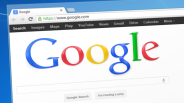The National Highway Traffic Safety Administration (NHTSA) just rolled out a Twitter campaign aimed at curbing texting while driving.
The idea is to publicly shame those who admit engaging in the perilous behavior, so the Twitter account of the administration has started to chastise those who admit to tweeting and driving.
The administration's approach could lead to a decrease in the rising death toll linked to smartphone use.
During the first half of 2015, 8.1 percent of traffic deaths were related to using the smartphone while at the wheel.
It may be true that texting while driving feels bad in a kind of good way while drivers are doing it, but these statistics show the ugly face of the behavior.
As people generally react to public shaming and seeing how federal authorities have, well, authority, it is clear why the Twitter campaign might work. Getting chastised by a friend stings, but being criticized by an official agency really hurts.
Note that the NHTSA did attempt to curb the number of drivers who practice texting and driving before, but it used different tools. As far back as 2010, the federal body had attempted to ban texting and driving at the national level. Needless to say, the action flopped.
The tweets from the NHTSA come with the #justdrive hashtag, which seems to be taking off among federal and state traffic safety agencies.
Sometimes, the drivers admit they have a problem and the agency is rather supportive.
.@Kenzie_Willis we concur. Keep off your phone and #justdrive. No text is worth wrecking your car or losing a life over.
— NHTSA (@NHTSAgov) April 22, 2016
Some other times, the NHTSA's comebacks are sharper and urge people to do the right thing.
You might not have a problem with the texting & driving, @DuckDaggettlss, but we do. Stay off your phone and #justdrive - it's not worth it. — NHTSA (@NHTSAgov) April 22, 2016
In 2014, a YouTube video depicting the dangers of texting and driving was posted on the agency's website. The video, which counts almost 9.5 million views at the time of writing, shows the story of Elizabeth May Marks. The 20-year-old crashed her Mazda directly into the rear side of a tow truck, as she was busy reading a text on her smartphone instead of focusing on driving. She survived, but her terrible injuries impaired her life in a significant fashion.
We fully encourage you to stay safe on the road and use your smartphone only after you have parked or stopped the car.
ⓒ 2025 TECHTIMES.com All rights reserved. Do not reproduce without permission.




